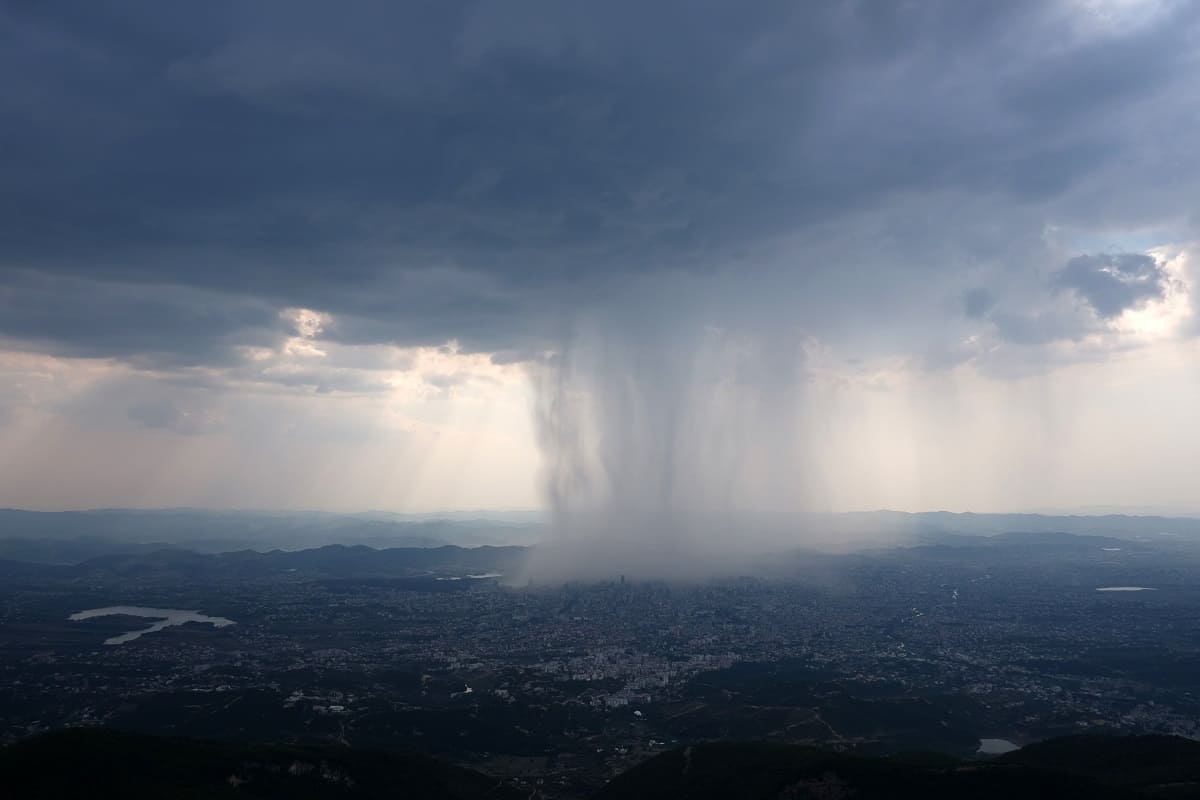まえがき
NHC・NOAAやJTWCなど海外の気象機関の気象解説・情報で、しばしば「shower」という記述があり、このことについて、以前「自動(機械)翻訳でシャワーと訳される語句は、どういう意味ですか」とのご質問がありましたので、存在する解説を利用させていただき簡単な説明を作りました。
以下には、「rain shower」と記述している場合が見られますが、NHCなどの気象機関を始め、米国の天気予報などでも「shower」一語のみで記述されていることが多く、これが自動翻訳によって、そのままシャワーと訳されてしまう理由ではないかと思われます。
驟雨:しゅうう(気象)
コトバンク 百科事典マイペディア
にわか雨(俄雨)または村雨(むらさめ)とも。急に降り出してまもなくやんでしまう雨。一様に長く降る地雨(じあめ)の対。対流性の雲から降る。層状の雲から降る雨が持続性をもつのに対し一時的なのが特徴。降ったりやんだりを繰り返す場合もある。夏の夕立や雷雨,寒冷前線が通過するときに降る雨など。
ブリタニカ国際大百科事典 小項目事典
rain shower
対流性の雲(積雲や積乱雲)から急に降り始め,まもなく降りやむ雨。にわか雨ともいい,降り方の強さも急激に変化する。夏の夕立や雷雨,寒冷前線の通過時の雨が典型である。
Wikipedia日本版
驟雨(しゅう雨、しゅうう, 英: rain showers)は、対流性の雲から降る雨のこと。降水強度が急に変化し、降り始めや降り止みが突然で、空間的な雨の分布を見ても変化が大きく散発的であるのが特徴。特に、短時間で止むような一過性の驟雨をにわか雨(俄雨、にわかあめ)という。
概要
対流性の雲とは、積雲や積乱雲のことである。これらの雲は、大気が不安定な時に上昇気流により垂直方向にもくもくと発達する一方、水平方向への広がりが小さい。そのため、一つの雲が通過する際に降る雨は、平均で十分程度、長くても数十分であり、すぐ止んでしまうのがふつうである。複数の雲が連続して通過すると、降り出してはすぐに降り止むことが繰り返され、強度変化の激しい雨が続いているものとして観測される。
なお、このような雨のうち、雨量が数十分で数十mmに達する強いものを「局地的大雨」、数時間で100mmを超えるような激しいものを「集中豪雨」と呼ぶ。
特に積乱雲による驟雨は、雷や突風を伴うこともある。
日本では夏の午後、夕方ごろに積乱雲が発生して驟雨となることが多く、夕立(ゆうだち)と呼ばれる。
Shower (precipitation)
A shower is a mode of precipitation characterized by an abrupt start and end and by rapid variations in intensity. Often strong and short-lived, it comes from convective clouds, like cumulus congestus. A shower will produce rain if the temperature is above the freezing point in the cloud, or snow / ice pellets / snow pellets / hail if the temperature is below it at some point.In a meteorological observation, such as the METAR, they are noted SH giving respectively SHRA, SHSN, SHPL, SHGS and SHGR.
Formation
Convection occurs when the Earth’s surface, especially within a conditionally unstable or moist atmosphere, becomes heated more than its surroundings and in turn leading to significant evaporation. The raised air parcel in a colder environment at altitude will cool but according to the adiabatic thermal gradient forming clouds, and later precipitation above the lifted condensation level (LCL). Depending on the Convective available potential energy (CAPE), the clouds will be cumulus humilis, cumulus mediocris and then cumulus congestus, the latter giving short-lived precipitation of rain, snow or ice pellets changing in intensity, i.e. showers.
The life cycle of these clouds is fast because the updraft which forms them is most often cut off by the descent of precipitation. In addition, these clouds flow with atmospheric circulation and spend little time above a point on the ground. This explains the variations in intensity and the short duration of the showers. The type of precipitation will depend on the temperature structure in the cloud and below it:
- In winter, when the temperature in the cloud is below freezing (0 °C), snowflakes will be generated:
- They will melt and give raindrops if the temperature rises above it in a deep layer between the cloud and the ground. If the layer is not deep enough, it can produce snow pellets showers.[4]
- Or remain as snow showers, or flurry, if the temperature remains below freezing.
- On the other hand, raindrops might form in a strong updraft in a convective cloud, even at temperature below freezing in the cloud (Supercooling) and freeze later, giving ice pellet showers.
- Finally, droplets can form and fall in an above freezing layer in other seasons, giving rain showers.
Extreme
If the convection is more intense, it leads to the formation of cumulonimbus clouds which have a very large vertical extension. This permits the displacement of electric charges from the bottom to the top that will create lightning and thunder. The showers associated with this kind of clouds are therefore called thundershowers or thunderstorms. Hail and other violent phenomena are associated with this type of convection.
Showery systems
Showers come from individual clouds as well as from groups of these. In mid-latitude regions, showers are often associated with cold fronts, often found along and behind it. However they can be embedded into a continuous rain episode when there is presence of band of conditional symmetric instability in an otherwise stable air mass. They can also be part of large convection zones called mesoscale convective system such as a squall line.
参考:reference|What is the difference between rain and showers?
-
-
What is the difference between rain and showers? - Met Office
Find out the difference between rain and showers and the dif ...
www.metoffice.gov.uk


